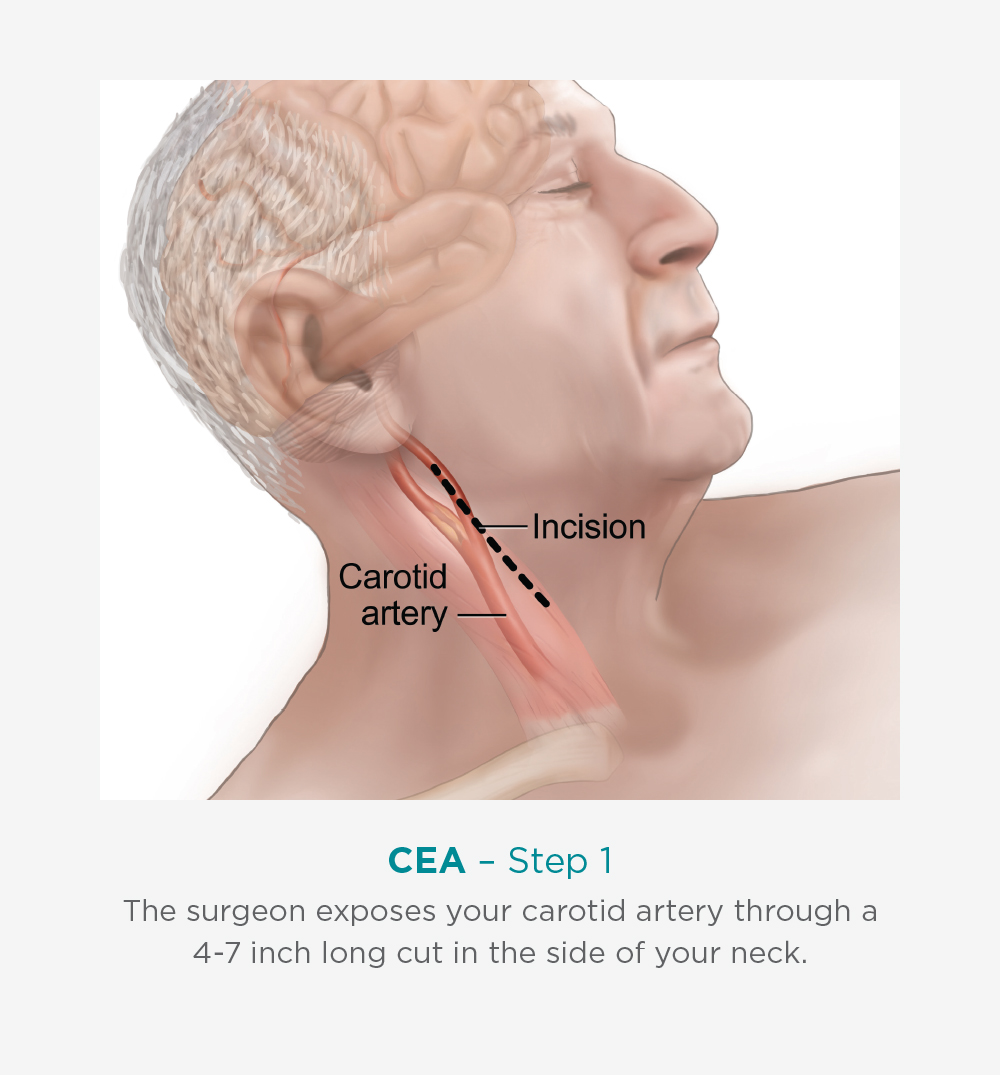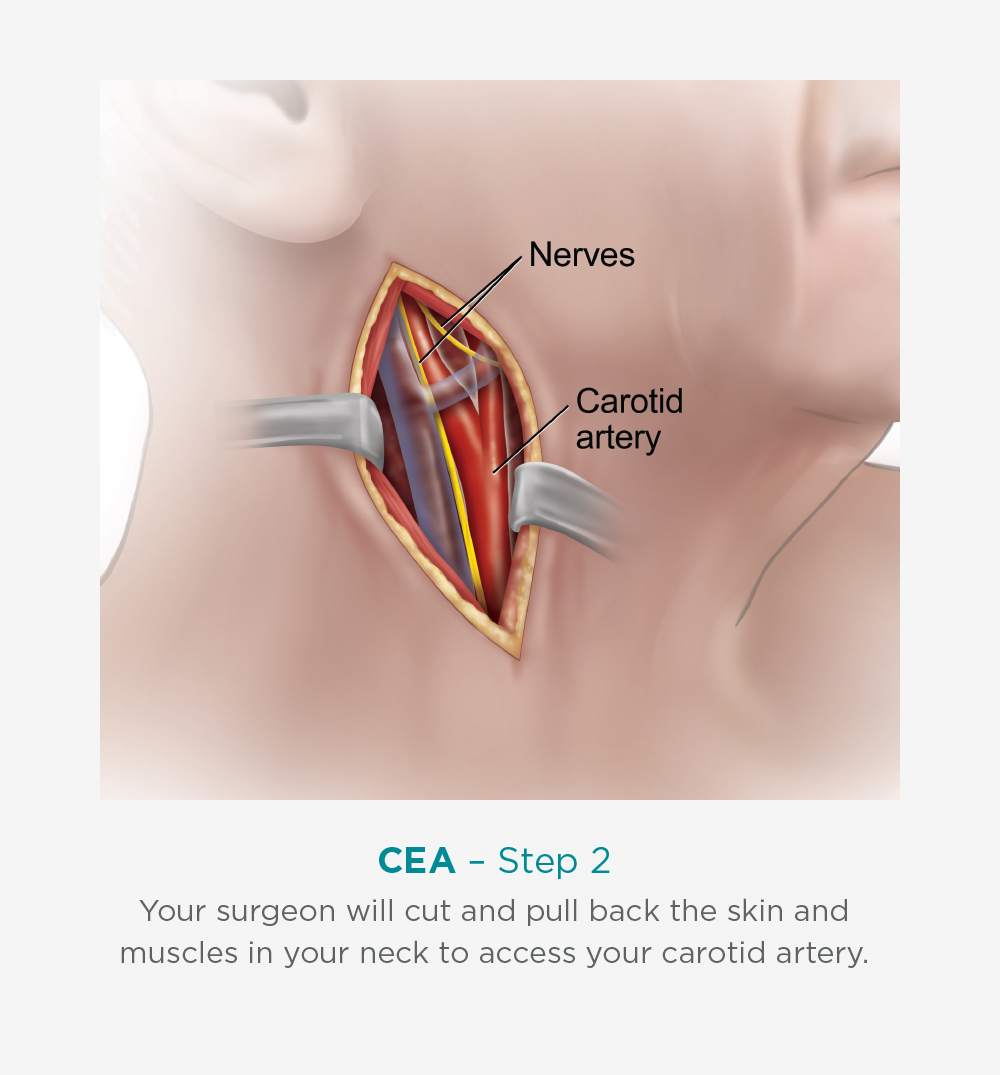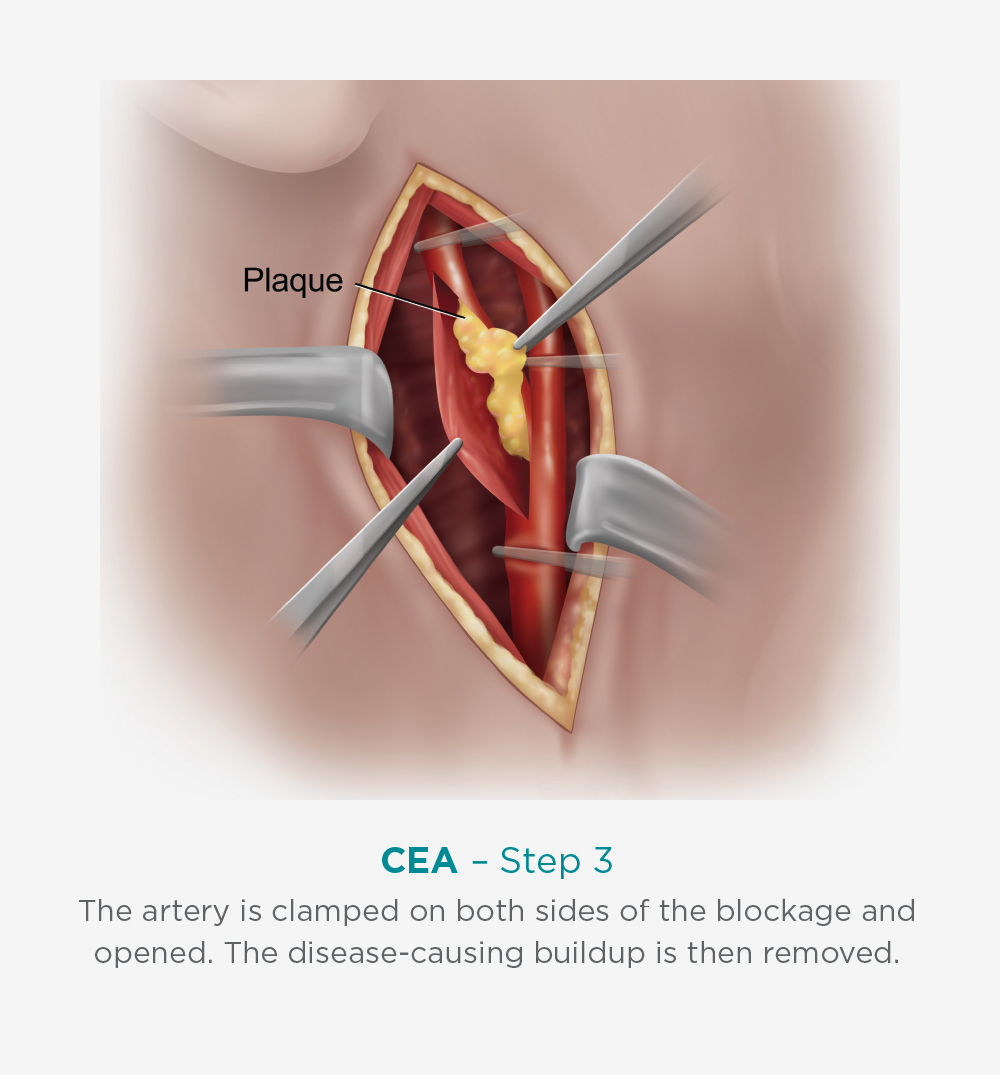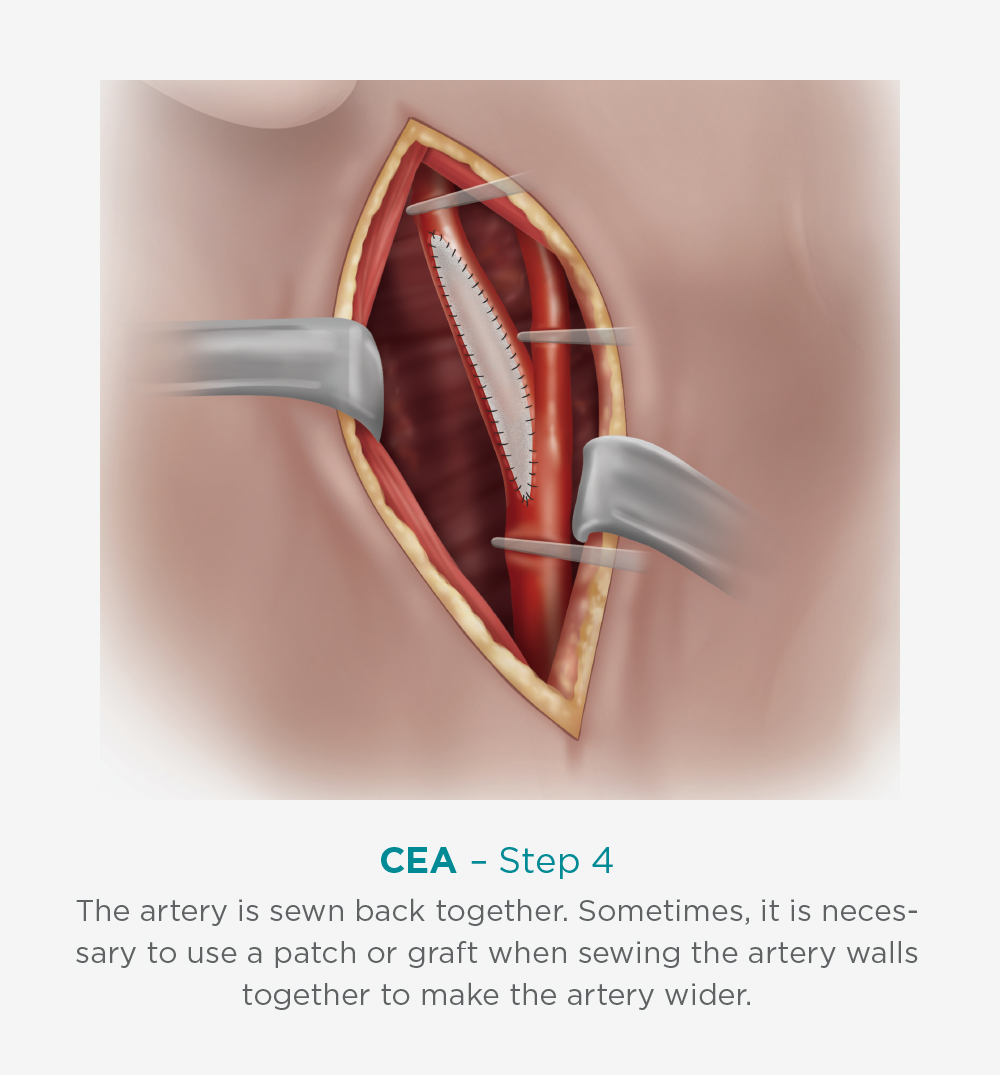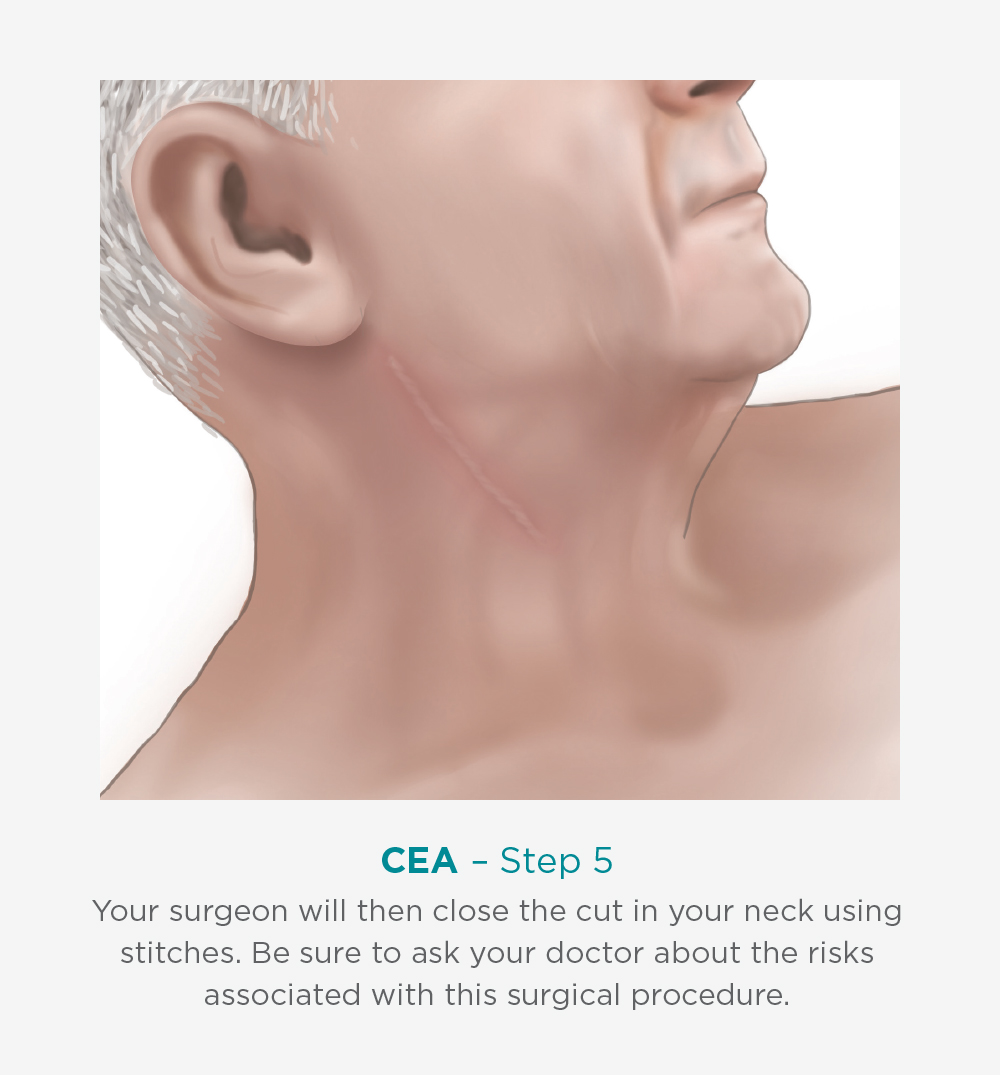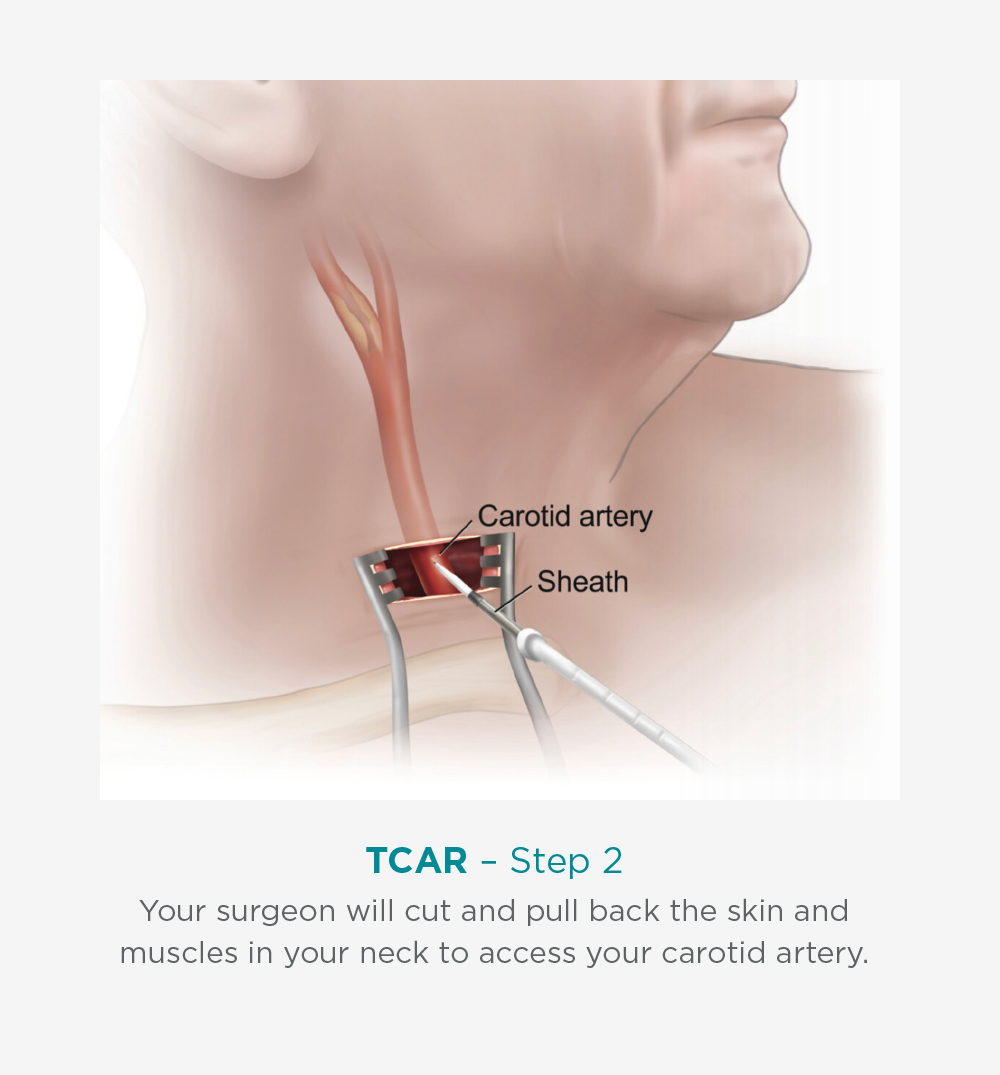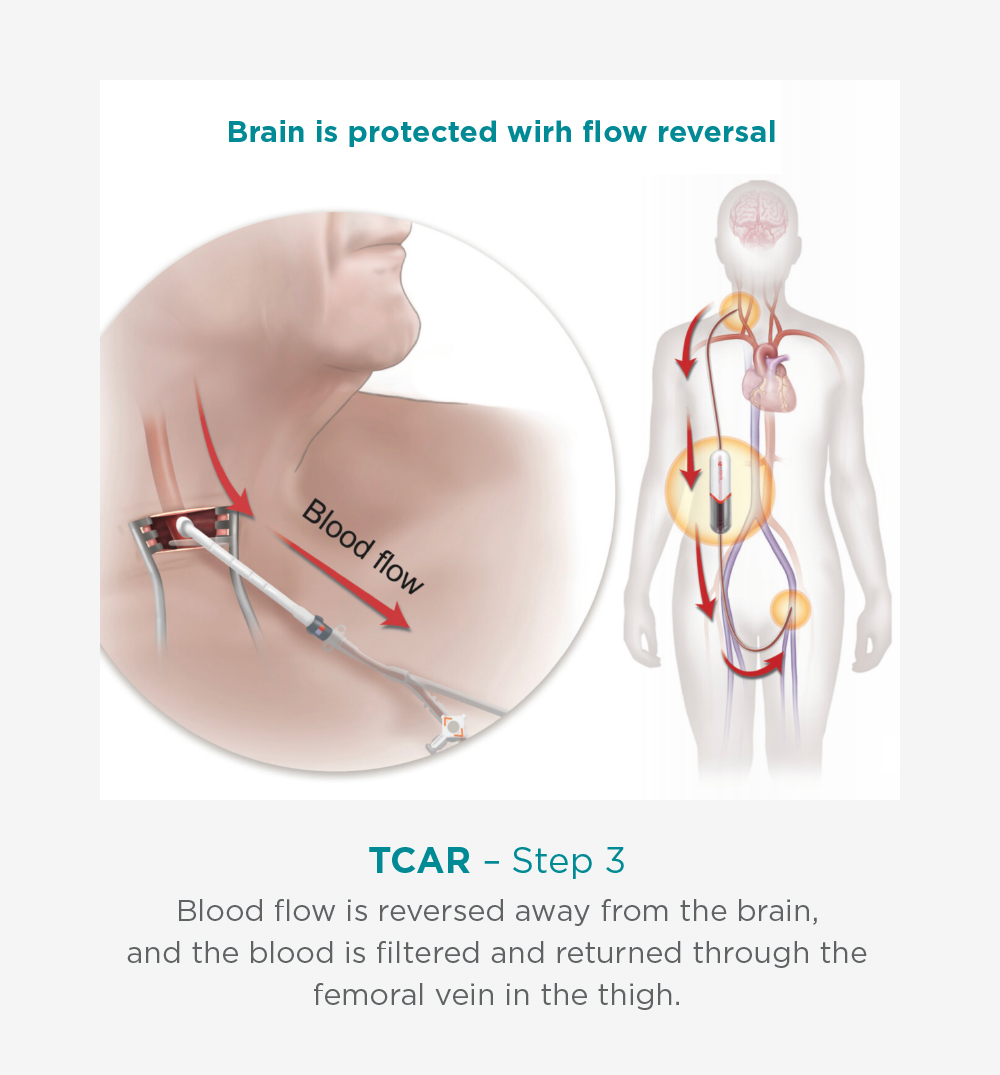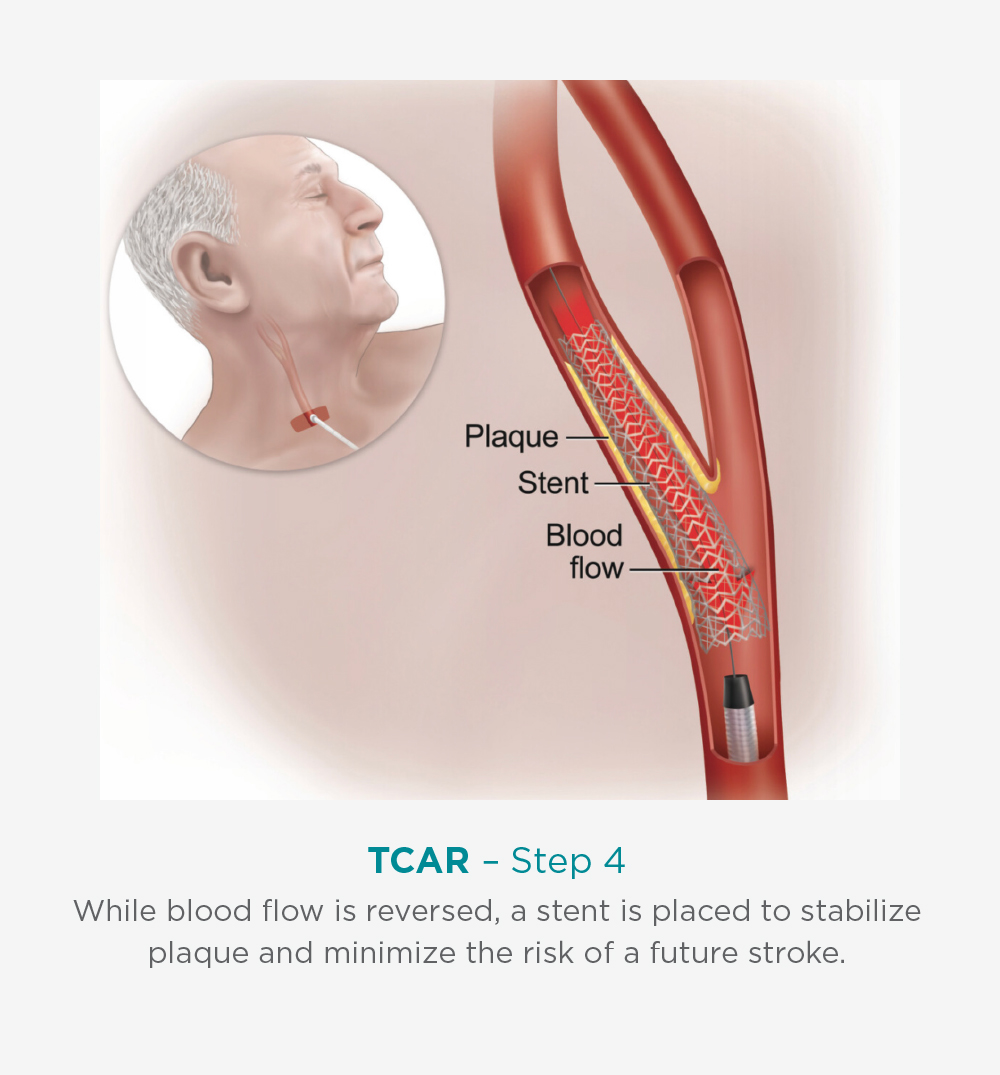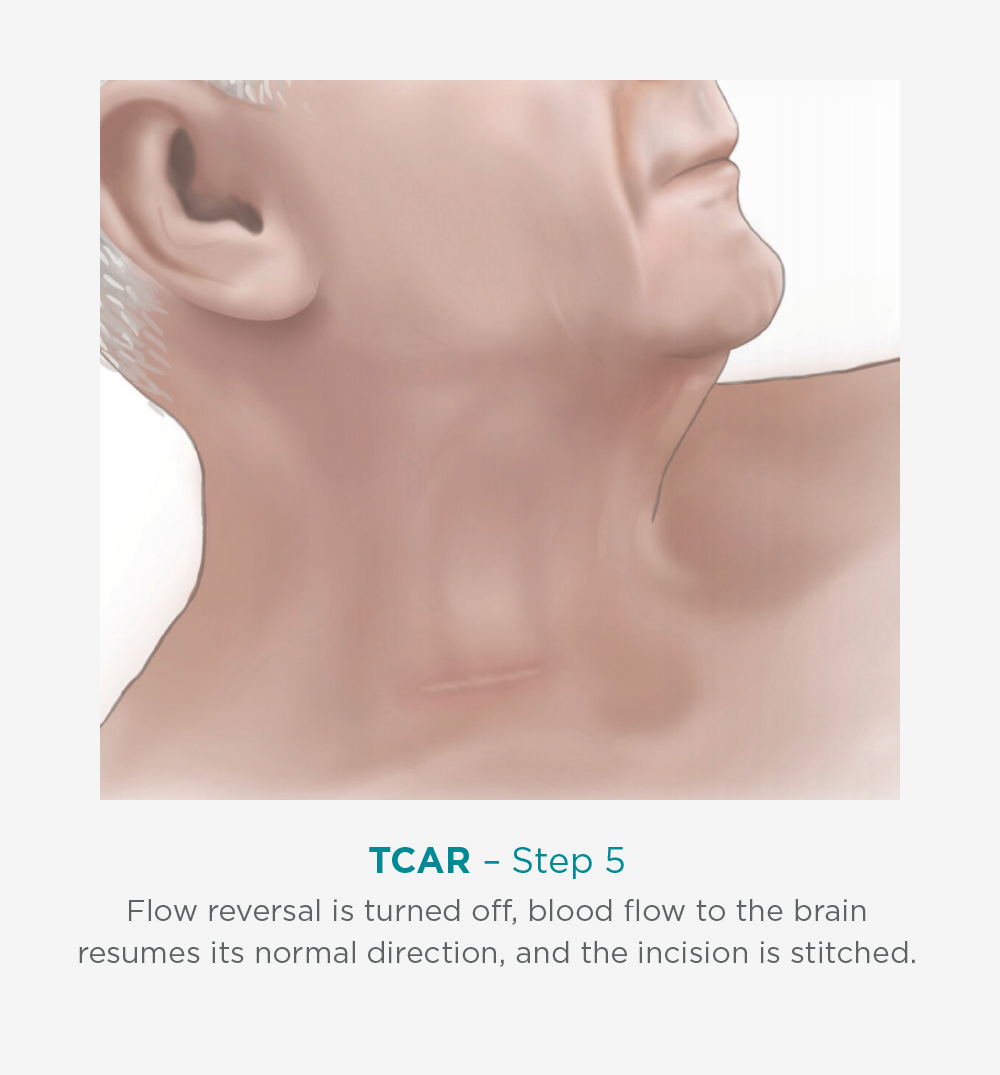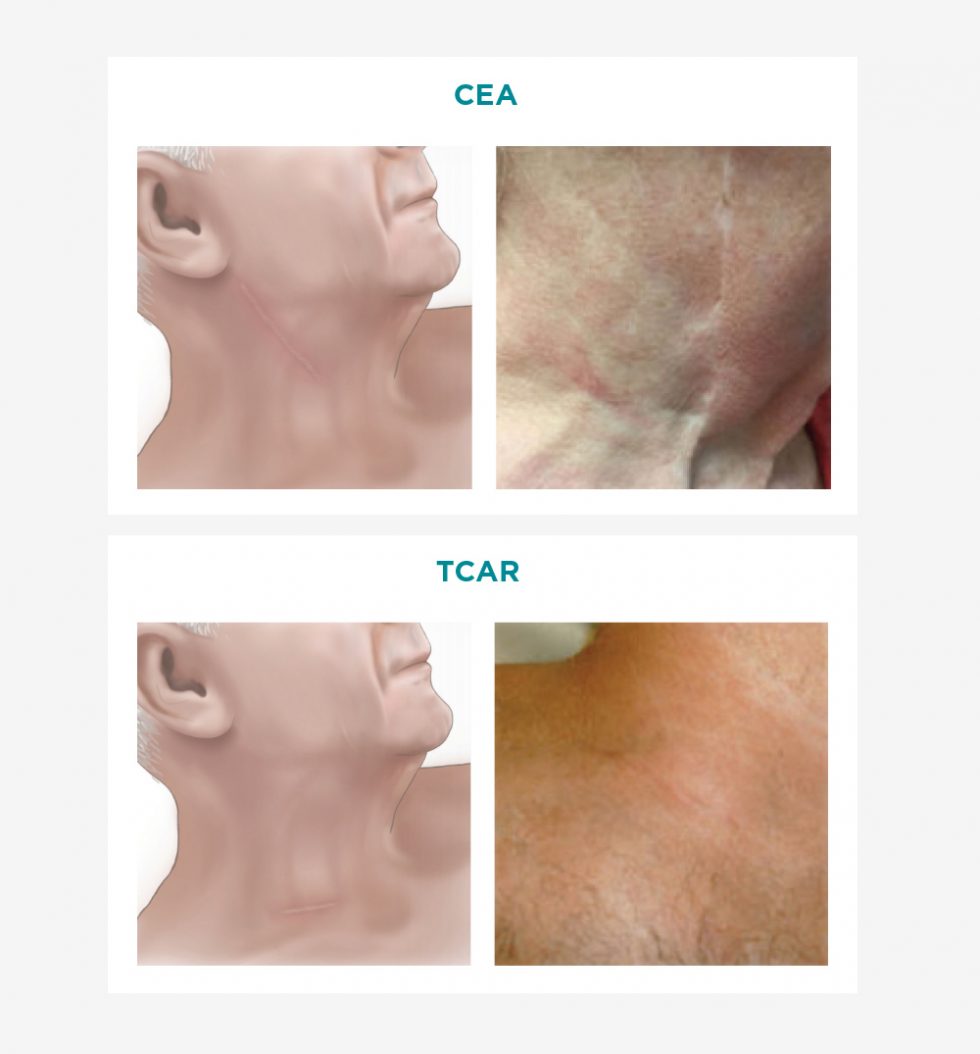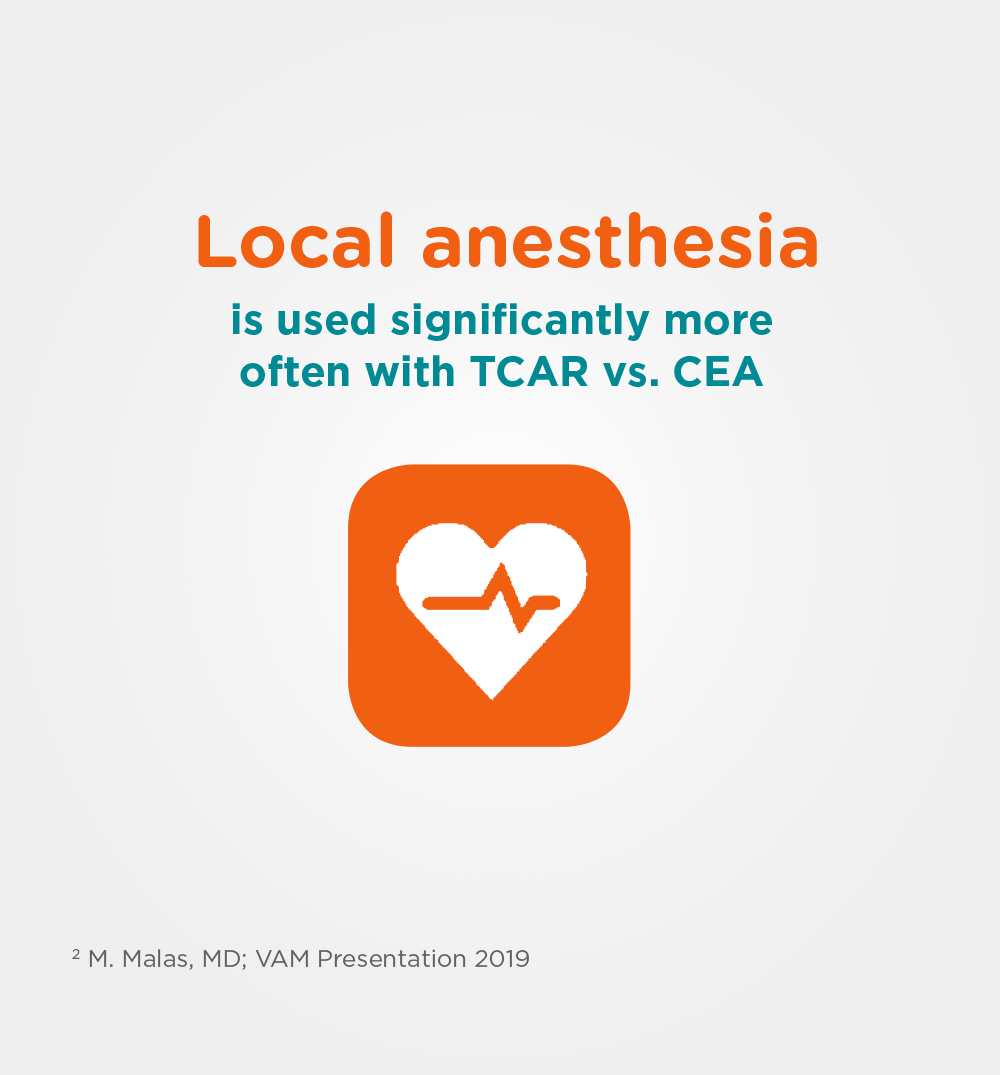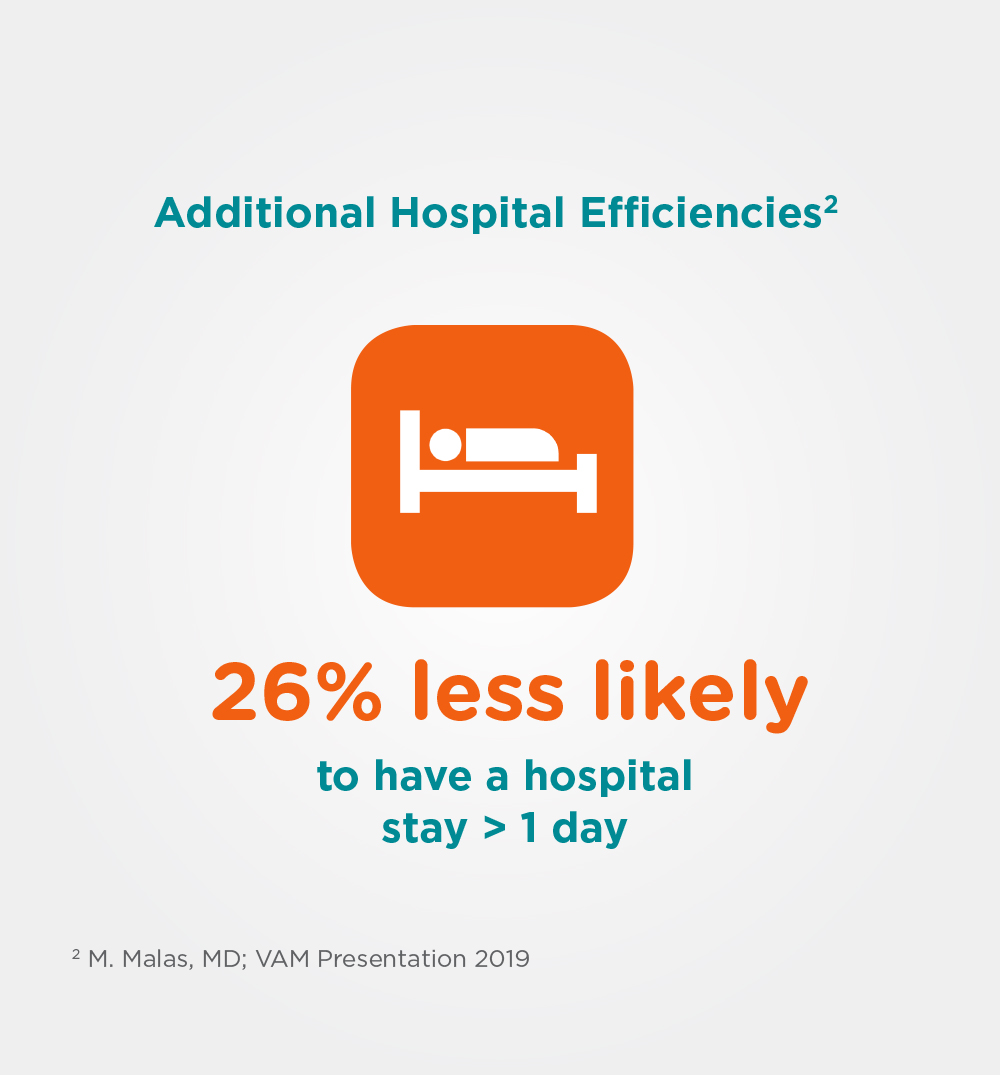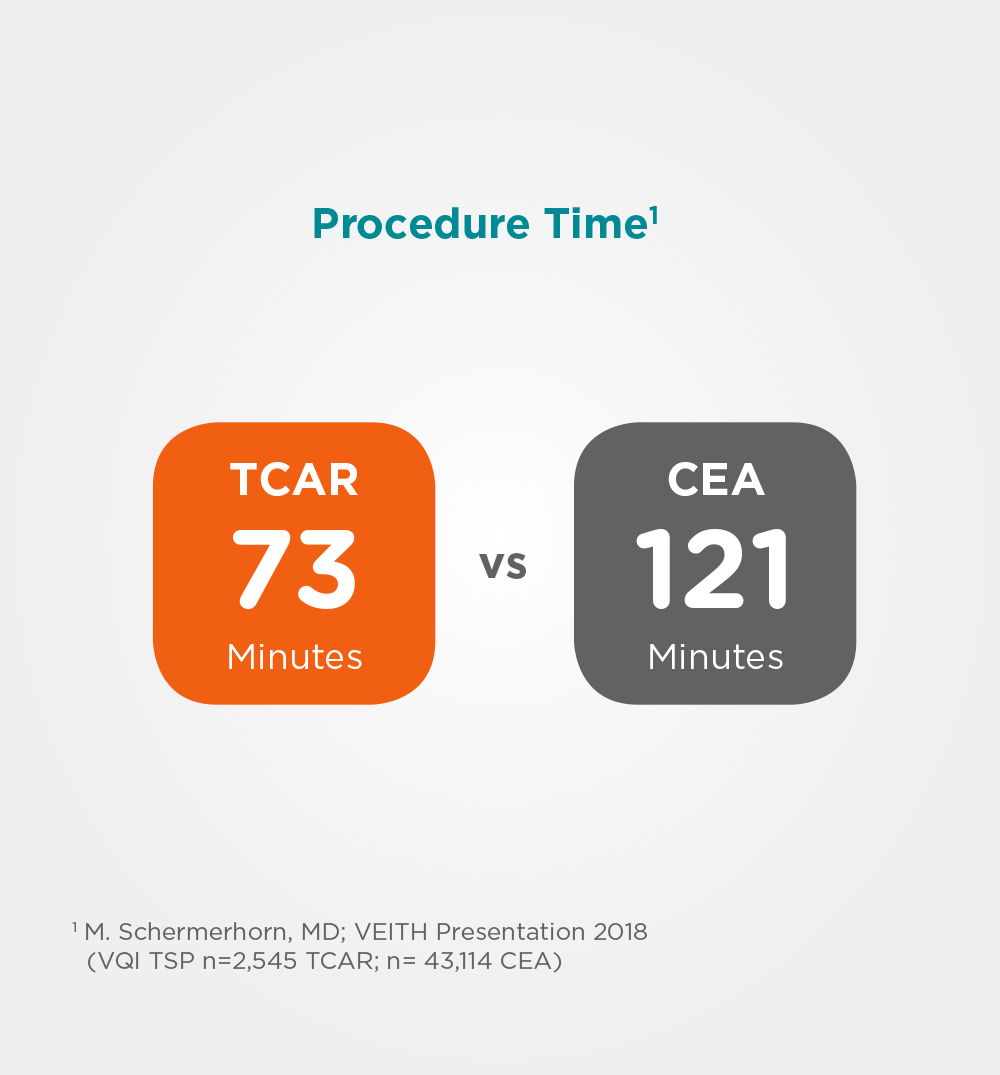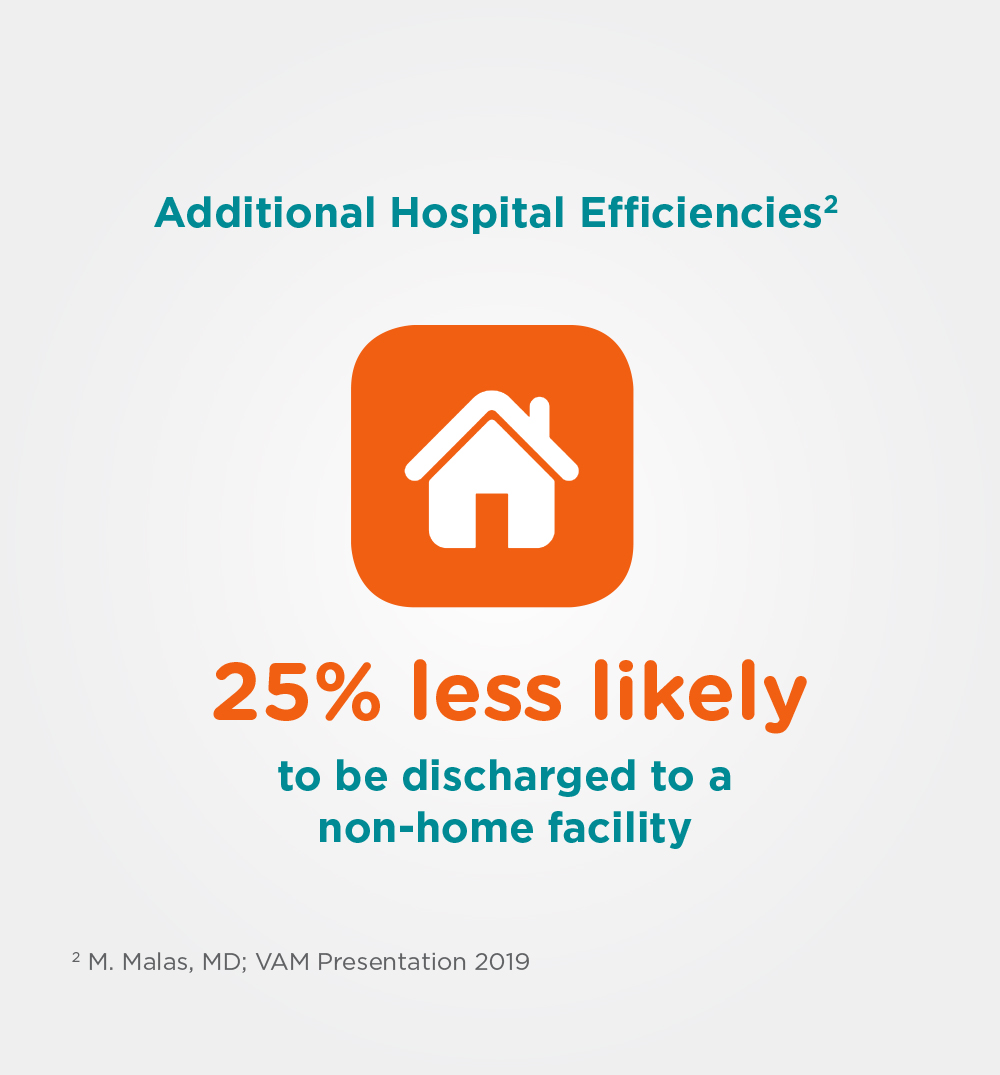Benefits of a less invasive approach to carotid intervention
Less risk of stroke.
More positive outcomes.
When treating carotid artery disease with surgery, there is always a risk of stroke caused by tiny pieces of the blockage breaking free and traveling up the carotid artery and into the brain. TCAR was developed specifically to address this issue and lower that risk by capturing any emboli that break free through a “reverse flow” method.
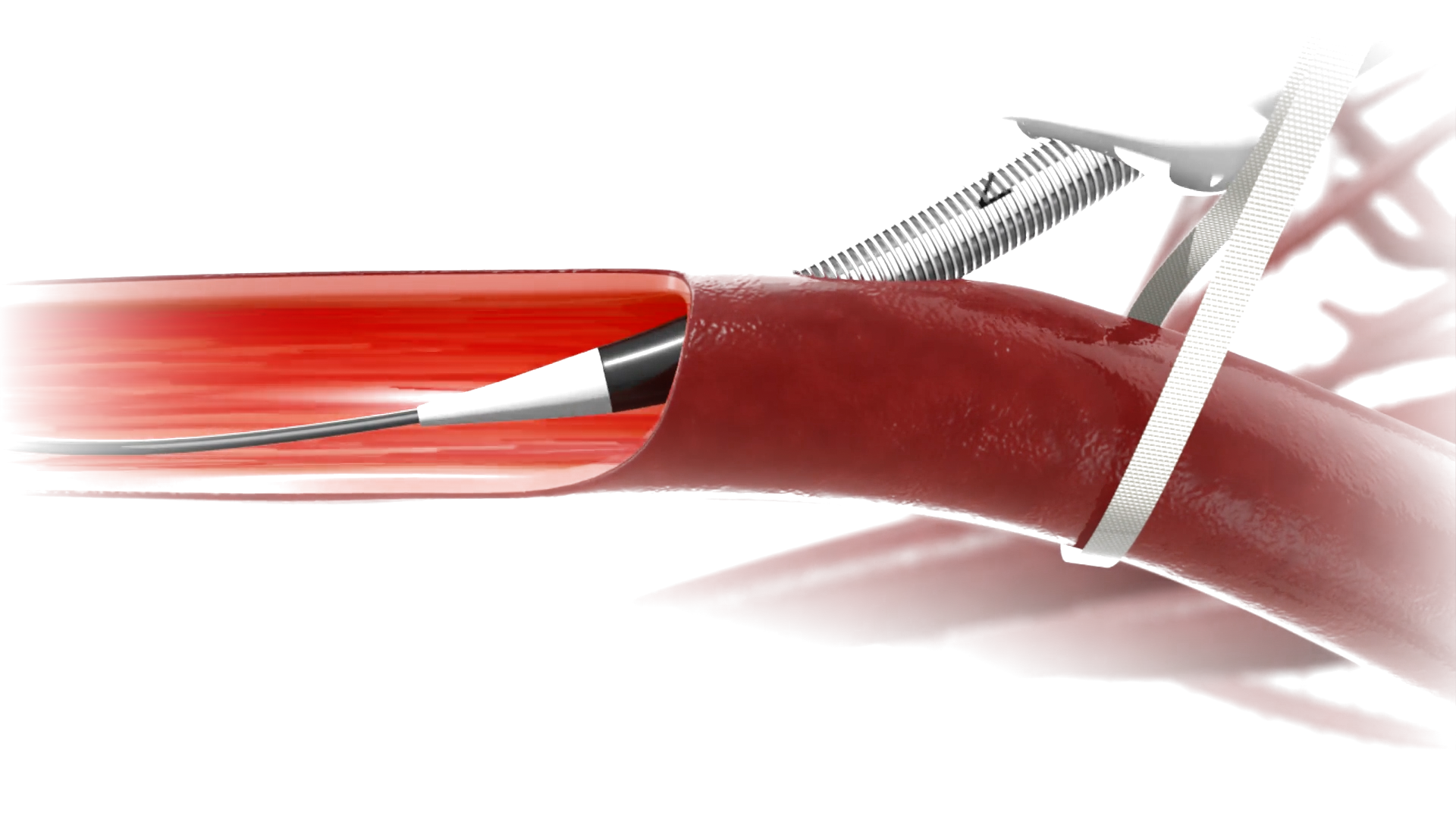
Less Invasive
Carotid endarterectomy (CEA) has long been considered the gold standard treatment because of its low procedural stroke rate. However, CEA carries a higher risk of myocardial infarction, and cranial nerve damage due to the larger incision. Transcarotid artery revascularization (TCAR) is a less-invasive procedure with the lowest reported carotid stenting stroke rate of 1.4%. Compare the steps for each procedure in the images to the left.
A Preferred Post-Procedure Experience
TCAR delivers many efficiencies that directly impact patient experience. Due to its smaller incision and less invasive approach, TCAR may be associated with less scarring, lower rates of infection and less patient discomfort.
Insurance and Medicare Coverage for TCAR
The TCAR procedure is typically covered by insurance for patients at high risk for open surgery. Your physician will assess your risk factors to determine if you are eligible for coverage.
